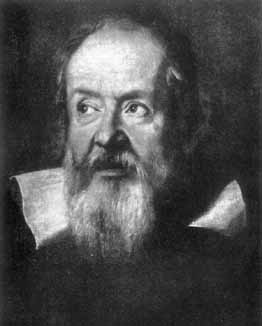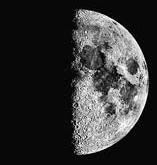 Galileo Galilei (1564-1642) provided the crucial observations
that proved the Copernican hypothesis, and also laid the
foundations for a correct understanding of how objects moved
on the surface of the earth (dynamics) and of gravity.
One could, with considerable justification, view Galileo
as the father both of modern astronomy and of modern physics.
Galileo Galilei (1564-1642) provided the crucial observations
that proved the Copernican hypothesis, and also laid the
foundations for a correct understanding of how objects moved
on the surface of the earth (dynamics) and of gravity.
One could, with considerable justification, view Galileo
as the father both of modern astronomy and of modern physics.
The Telescope
Dutch spectacle makers invented the telescope, but Galileo
was the first to use the telescope to study the heavens
systematically.
His little telescope was poorer than any cheap
modern amateur telescope, but what he observed
rocked the very foundations of Aristotle's universe
and the theological-philosophical worldview it
supported. It is said that what
Galileo saw was so disturbing for some officials of
the Church that they refused to even look through his
telescope; they reasoned that the Devil was capable of
making anything appear in the telescope, so it was
best not to look through it.
 The Sidereal Messenger
The Sidereal Messenger
Galileo published this small book describing his discoveries
using the telescope. It included his first 3 results:
1) Craters on the Moon
He reported that the moon was not perfect, but instead had deep shadows
from valleys and mountains on its surface. He also showed it was a world
not unlike Earth.
2) The Milky Way was made of Stars
He showed that the great "cloud" called the Milky Way (which we
now know to be the disk of our spiral galaxy) was composed of
enormous numbers of stars that had not been seen before.
3) Moons of Jupiter
Galileo observed 4 points of light that changed their positions
with time around the planet Jupiter. He concluded that these
were objects in orbit around Jupiter. Io, Europa, Ganymede, and
Callisto are shown below with approximately the correct scale of
their orbit and motion to the size of Jupiter's disk.

These observations showed there were new things in the heavens that Aristotle and Ptolemy had known nothing about. Jupiter's moons demonstrated that a planet could have moons circling it (other centers of motion) that would not be left behind as the planet moved around its orbit!